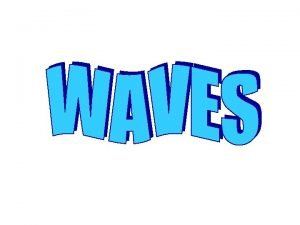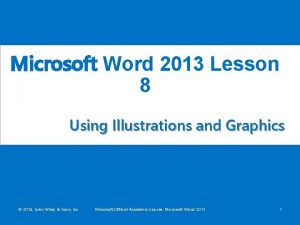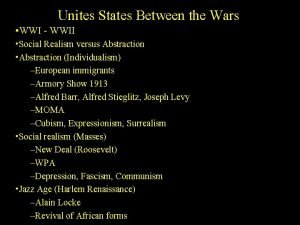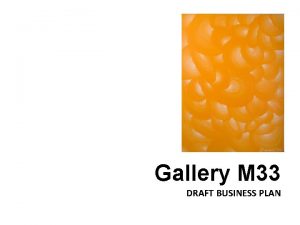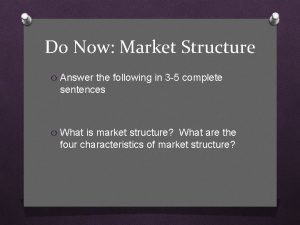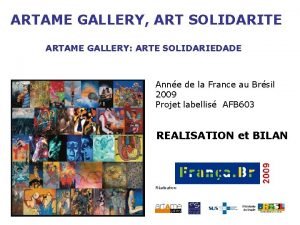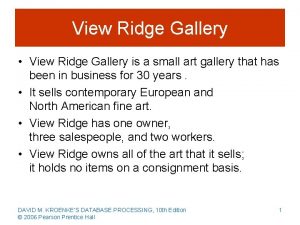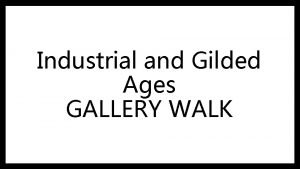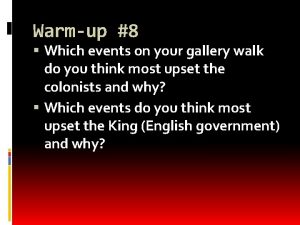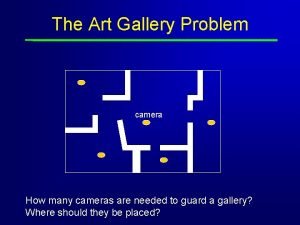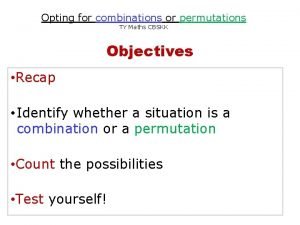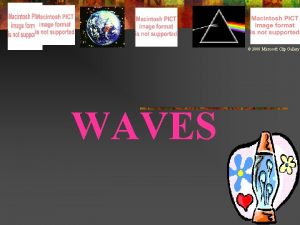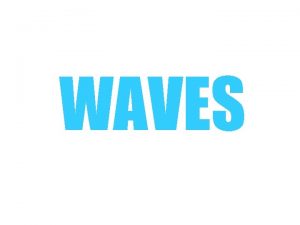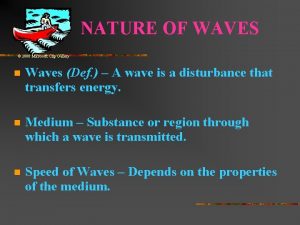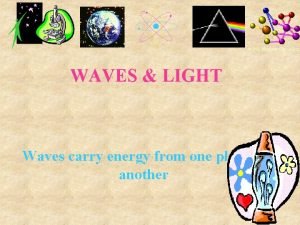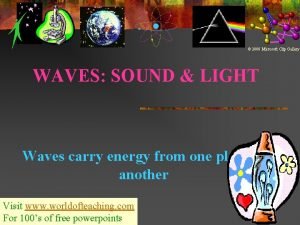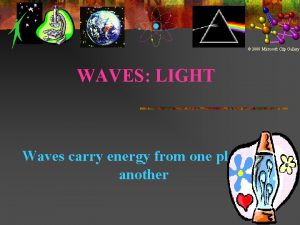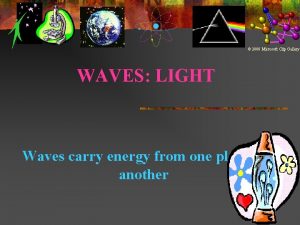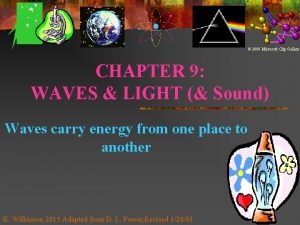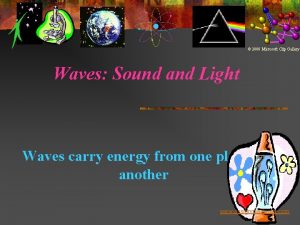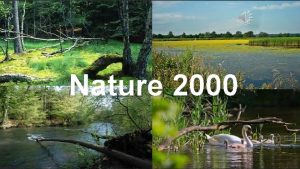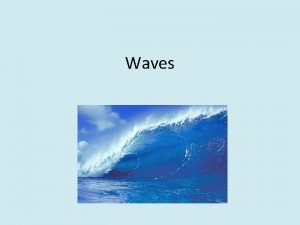NATURE OF WAVES 2000 Microsoft Clip Gallery Waves












































- Slides: 44


NATURE OF WAVES © 2000 Microsoft Clip Gallery • Waves (Def. ) – A wave is a disturbance that transfers energy. • Medium – Substance or region through which a wave is transmitted. • Speed of Waves – Depends on the properties of the medium.

What is a wave? • Mechanical Wave: – when materials oscillate (move back in forth) to transfer energy. It needs to have an initial energy input and a medium in which to travel. • What do waves transfer then? • Energy! • Medium – – The substance the wave travels through, can be gas, liquid, or solid

What causes waves? • Vibration – are the oscillations that occur in a wave. • Can You Make Your Slinky Vibrate? Draw a picture of what your oscillations look like:

Types of waves • Transverse waves – move side to side – Parts: • Crest – the top part of the wave • Trough – the bottom part of the wave • Longitudinal waves – move in and out by compressing together – Parts • Compression – close together • Rarefaction – far apart

Basic wave properties I • All waves have 4 basic properties – Amplitude – the height of the wave – Wavelength – the length of one complete cycle

Basic Wave Properties II • Frequency – how often the wave occurs over a period of time. – Cycles per second. Measured in Hertz (Hz) – Example: 8 cycles in 2 seconds = 4 Hz • Speed – the meters the wave traveled per second – Speed = 9 meters in 3 seconds = 3 m/s – Speed = wavelength x frequency


1. A wave has a wavelength of 15 cm and has a frequency of 10 waves/second. What is the speed of the wave? 2. The speed of a wave on a rope is 50 cm/s and it’s wavelength is 10 cm. What is it’s frequency? 3. A wave is traveling with a velocity of 125 m/s and has a frequency of 20 waves/second. What is the length of the wave?

What Is Sound? Ø Sound is vibrations that you can hear Ø Waves travel as longitudinal waves Ø Sound is due to vibrations that make the molecules around them compress. • Ex: Air particles are compressed and spread out • Travel at 343 meters/second

Sound Depends On: Ø A vibrating source to set up the sound waves Ø A medium to carry the waves Ø A receiver to detect them

Sound Vibrations Ø Back-and-forth movement of matter or particles of matter Ø Sound travels away from the vibrating object in all directions

Reflection vs. Absorption Ø Just like light waves, sound waves can be reflected or absorbed Ø Sound waves reflect straight from a smooth, flat surface l There is a clear echo Ø Sound waves are reflected in many directions from a rough, uneven surface l There is no clear echo

Can sound travel in empty space? ? Ø No! Because there is no medium or particles. Light may travel thru space because it is a particle that Travels in a Wave and Thus does not Need a medium.

Sound waves travel at all directions until it reaches a surface where it is absorbed or reflected. Ø This is how sound waves normally travel from one source.

Sound waves from a tuning fork. Ø As the fork vibrates it causes particles to compress and rarefact (spread out)

Wave Speed Ø A Greater Speed means either: Ø A greater Frequency l Or Ø A greater wavelength

Volume: Intensity/Loudness Ø Amount of sound energy reaching your ears Ø Or: How High the Amplitude is Ø Depends on: l l How far the vibrating object is moving as it goes back and forth How far you are from the source of a sound Volume Control

Different Pitch: Ø High Pitch is when Less Material vibrates with more energy: High Frequency Ø Low Pitch is when MORE Material vibrates with Less energy: Low Frequency

Pitch The Higher the Frequency the Higher the Pitch. The Lower the Frequency the Lower the Pitch. Ø Depends on how fast the source of the sound is vibrating Ø To change the pitch: l l Change the length of the material vibrating Change thickness of the material vibrating • Example: Boom Whackers

Name that Tune ØC C G G A A G ØFF E E D D C ØGG FF EE D ØCC GG AA G ØFF EE DD C The different lengths will cause a different frequency / note or vibration when struck OR A lower frequency when longer because it makes a longer wavelength. Ø

Name that Tune ØC, C, D, C, F, E ØC, C, D, C, G, F ØC, C, High C, Ø # , A A, , A F, G, F E, D,

Ø Ultrasound or ultrasonography is a medical imaging technique that uses high frequency sound waves and their echoes. The technique is similar to the echolocation used by bats, whales and dolphins, as well as SONAR used by submarines. In ultrasound, the following events happen: Ultra Sound

The ultrasound machine transmits highfrequency (1 to 5 megahertz) sound pulses into your body using a probe. 1. The sound waves travel into your body and hit a boundary between tissues (e. g. between fluid and soft tissue, soft tissue and bone). Ø Some of the sound 2. waves get reflected back to the probe, while some travel on further until they reach another boundary and get reflected. Ø The reflected waves are 3. picked up by the probe The machine displays the distances and intensities of the echoes on the screen, and relayed to the machine. 4. forming a 2 D image like the one shown above.

Ø To locate a target, a submarine uses active and passive SONAR (sound navigation and ranging). Active sonar emits pulses of sound waves that travel through the water, reflect off the target and return to the ship. By knowing the speed of sound in water and the time for the sound wave to travel to the target and back, the computers can quickly calculate distance between the submarine and the target SONAR Whales, dolphins and bats use the same technique as ultrasound for locating prey (echolocation).

Doppler Affect Occurs as sound is made from a moving source Ø Occurs as sound travels away from you or toward you. Ø Pitch is heard because Ø Toward: higher pitch Ø Away: lower pitch Ø

As Sound Breaks the Sound Barrier it creates a loud boom! Occurs when travel faster than the speed of sound: 343 m/sec. Ø This is because air particles can’t move out of the way fast enough. Ø

When something travels faster than sound> Supersonic Ø Because air particles don’t move out of the way it creates an additional wave.

Ø As the resonant wave moves around the glass, it Making Glasses Sing drags the water molecules with it, creating a wave of water that you can see near the edge of the glass. The dragging water molecules effectively increase the mass (both the water and the glass molecules) and reduce the energy of the wave traveling through the http: //recipes. howstuffworks. com/ question 603. htm glass. When the energy is Ø As you add more liquid in reduced, so is the frequency of the wave in there is more vibrating material and you get a lower glass, which is reflected in the pitch of the sound wave frequency and a lower pitch. that you hear.

Sound Travels at Different Speeds Through Different Materials Ø Feet per second

Which Would Be the Best Conductor? Solid? Ø Liquid? Ø Gas? Ø Ø Solid – The Bricks!

What happens to the speed of sound if the temperature changes? Ø For the answer visit the following website: http: //www. sengpielaudio. com/calculator-speedsound. htm Ø Why does this happen? l l l Molecules move faster as the temperature increase and slower as the temperature decreases Because Air is the medium at which sound travels it affects the speed. If the temperature is the same, then the speed of sound is the same on a mountian top or at ocean level • Air Pressure and Air Density DO NOT affect speed of sound. • Density of Materials (solids, liquids, gases) does matter!

SAMPLE LESSON: Light & the Electromagnetic Spectrum By D. L. Power Revised 1/20/01 © 2000 Microsoft Clip Gallery

LIGHT: What Is It? © 2000 Microsoft Clip Gallery • Light Energy – Atoms • As atoms absorb energy, electrons jump out to a higher energy level. • Electrons release light when falling down to the lower energy level. – Photons - bundles/packets of energy released when the electrons fall. • Light: Stream of Photons • This photon travels in a wave. © 2000 Microsoft Clip Gallery

Electromagnetic Waves • Speed in Vacuum – 300, 000 km/sec – 186, 000 mi/sec • Speed in Other Materials – Slower in Air, Water, Glass © 2000 Microsoft Clip Gallery

Electromagnetic Spectrum © 2000 Microsoft Clip Gallery

Electromagnetic Spectrum • Visible Spectrum – Light we can see – Roy G. Biv – Acronym for Red, Orange, Yellow, Green, Blue, Indigo, & Violet. – Largest to Smallest Wavelength.

LIGHT: Refraction of Light • Refraction – Bending of light due to a change in wave speed. – Index of Refraction – Amount by which a material refracts light. – Prisms – Glass that bends light. Different frequencies are bent different amounts & light is broken out into different colors.

What happens to the ray of light? It is (mainly) reflected away from the normal or or refracted ? towards the normal But different colours are refracted by different angles.

In fact, the ray is : a i ted (bent through an angle), and v e d • • dispersed (split up into separate colours) like this.

R What happens now? screen Red is deviated least most / least ? Violet is deviated most / least ? V

R There is a spectrum on the screen: screen Red Orange Yellow Green Blue Indigo Violet ROY G BIV V

Resources: • http: //www. kettering. edu/~drussell/demos. html

 Microsoft for some users
Microsoft for some users Clip art microsoft word 2013
Clip art microsoft word 2013 Microsoft word 2000
Microsoft word 2000 Difference between electromagnetic and mechanical waves
Difference between electromagnetic and mechanical waves Electromagnetic waves are longitudinal waves true or false
Electromagnetic waves are longitudinal waves true or false Examples of a mechanical wave
Examples of a mechanical wave Similarities of mechanical waves and electromagnetic waves
Similarities of mechanical waves and electromagnetic waves The wave chapter 13
The wave chapter 13 Sound waves longitudinal waves
Sound waves longitudinal waves Short wave vs long wave radiation
Short wave vs long wave radiation Mechanical waves and electromagnetic waves similarities
Mechanical waves and electromagnetic waves similarities Electromagnetic waves vs mechanical waves
Electromagnetic waves vs mechanical waves Mechanical and electromagnetic waves similarities
Mechanical and electromagnetic waves similarities Surface waves and body waves
Surface waves and body waves Is a seismic wave mechanical or electromagnetic
Is a seismic wave mechanical or electromagnetic Compare and contrast p waves and s waves using venn diagram
Compare and contrast p waves and s waves using venn diagram Mechanical waves vs electromagnetic waves venn diagram
Mechanical waves vs electromagnetic waves venn diagram What are constructive waves
What are constructive waves The wave chapter 10
The wave chapter 10 Alfred stieglitz straight photography
Alfred stieglitz straight photography Gallery walk instructions
Gallery walk instructions Gallery su
Gallery su Art rental business plan
Art rental business plan Arjo mobility gallery
Arjo mobility gallery Market structure poster
Market structure poster Artame gallery
Artame gallery E paper gallery
E paper gallery View ridge gallery database
View ridge gallery database Theme gallery.in
Theme gallery.in Usa.gov apps gallery
Usa.gov apps gallery Themegallery.com
Themegallery.com Gilded age gallery walk
Gilded age gallery walk National gallery venue hire
National gallery venue hire Causes of the american revolution gallery walk
Causes of the american revolution gallery walk Art gallery theorem
Art gallery theorem Denise yaghmourian
Denise yaghmourian A basketball team has 12 members who can play any position
A basketball team has 12 members who can play any position Sof gallery
Sof gallery Www.themegallery.com
Www.themegallery.com 5 themes of geography posters
5 themes of geography posters Gta v gallery
Gta v gallery Spotfire demo gallery
Spotfire demo gallery Theme gallery.in
Theme gallery.in Www.themegallery.com
Www.themegallery.com Gallery walk
Gallery walk
